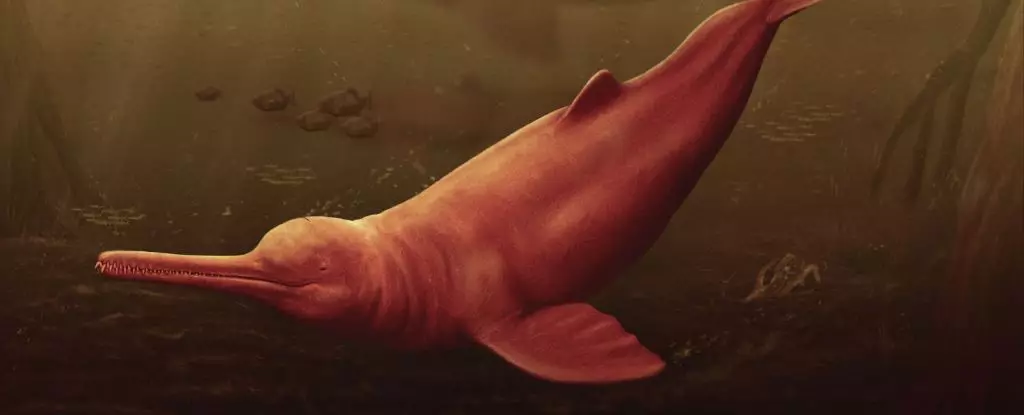An ancient dolphin that roamed the waters of the Amazon basin 16 million years ago has been identified as one of the largest freshwater toothed whales to ever exist. This massive creature measured an impressive 3.5 meters in length, making it significantly larger than the pink Amazon river dolphins that currently inhabit the region. Despite being smaller than modern oceanic dolphins like the orca, this newly discovered species sheds light on the diverse range of species that once populated the Amazon basin.
Unlikely Relatives
Surprisingly, the newly unearthed dolphin species, Pebanista yacuruna, is not closely related to the current Amazon river dolphins. Instead, its closest relatives are dolphins found in the Ganges and Indus rivers of South Asia. This unexpected connection highlights the complex evolutionary history of these aquatic mammals and showcases the intricate web of biodiversity that has existed throughout time.
Freshwater river dolphins exhibit unique characteristics that set them apart from their marine counterparts. They often have pinker skin and elongated beaks, though their overall appearance is similar to marine dolphins. Pebanista, discovered from a single skull found in Miocene fossil beds, possessed features characteristic of river dolphins, such as large crests on its forehead for echolocation. This adaptation was crucial for navigating the muddy waters of the Amazon basin, where visibility was limited.
Researchers believe that Pebanista initially evolved from marine cetaceans that ventured into the Amazon basin, which was then a system of rivers and lakes known as Pebas. The abundance of food and suitable habitat allowed these dolphins to thrive for millions of years. However, as the landscape changed and the Pebas system transformed into the modern Amazon basin, Pebanista faced challenges. Its prey disappeared, and the ecosystem underwent significant shifts, eventually leading to the extinction of this once-predominant species.
While the demise of Pebanista marks a tragic end, its discovery provides valuable insights into the adaptability and vulnerability of species in a changing environment. The evolution of the Amazon basin has been a dynamic process, with species coming and going as habitats shift. Understanding these past changes can offer valuable lessons for modern conservation efforts and ecosystem management. The intricate interplay of species within the Amazonian food web may have more similarities to the Miocene era than previously thought, underscoring the importance of studying ancient ecosystems for a comprehensive understanding of our natural world.



Leave a Reply